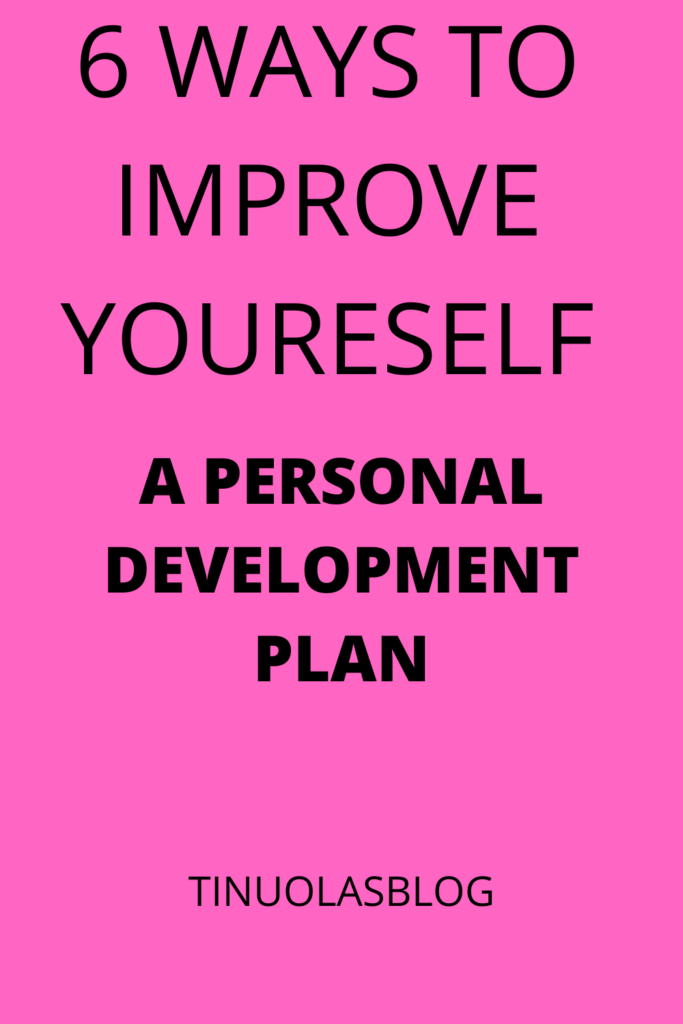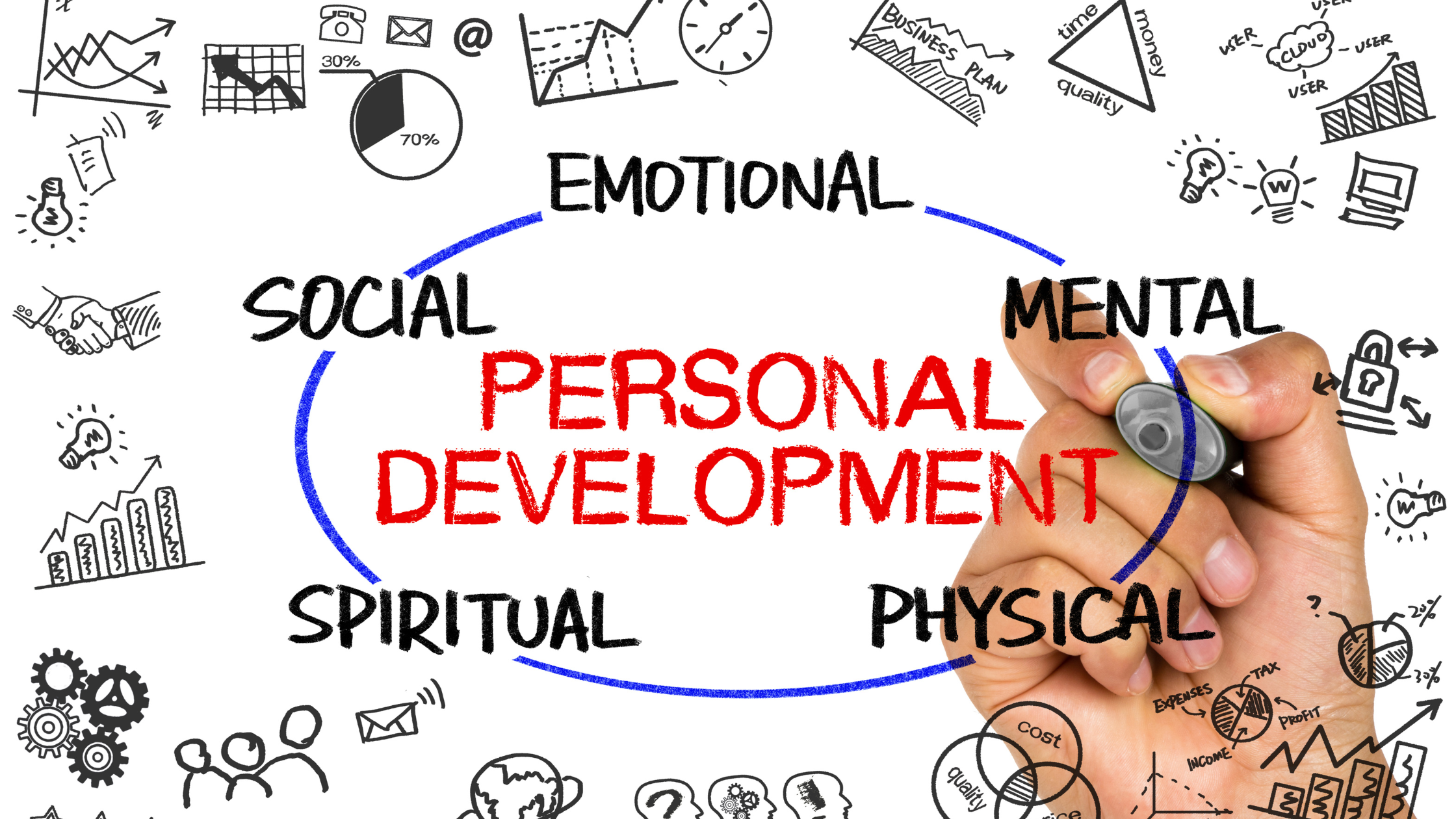Making a personal development plan is easy, and it can be a great way to set yourself up for success but most times success doesn’t come by mere words, but rather through a simple personal development plan which is also known as PDP.
In this article, I’ll explain the steps to creating your own personal development plan from scratch. The simple things you can do to improve yourself and the result will be visible in a short period of time.
But before I proceed on that, let me quickly take you through what a PDP is, why you need to create one and the benefits of having a personal development plan.
What is a personal development plan?
A personal development plan involves a critical self-assessment of all your plans from scratch to the execution stage. It includes taking appropriate actions toward realizing your set goals.
PDP which could be a short or long-term goal requires consistent follow-up and self-discipline.
Having a plan for your goals helps you to carry out a self-realization routine of what you have achieved so far in your plans, the challenges you could encounter in the course of the plan, and the strategies you may require to achieve them.
Have you at a time thought about achieving a goal or working on a personal project?
Your goals and projects may not necessarily be huge; anything you intend to achieve in a short or long period can be categorized as a goal.
While thinking of this goal or project, did you take out you time to document how you want to achieve it? The document you had during the thinking phase of the goal process is what we can refer to as a personal development plan.
But the question here is if you planned it the proper way whereby it would be easy for you to achieve within the timeframe.

Why then do you think you need a Personal Development Plan?
The truth is that we all need a PDP as long as we have plans and goals to succeed in life.
A proper plan helps us to align ourselves with our goals and there are always unlikely reasons you won’t succeed if you adhere to what you have in your plan.
Quickly, let us talk about the benefits of having a personal development plan.
Benefits of having a personal development plan.
Some of the major benefits of having a plan for your goals are that it helps you to have clarity of your goals; it helps you to identify the pros and cons involved in the plan and execution; what your strengths and weaknesses are, enhances your employability skills at the workplace.
Furthermore, it increases your daily motivation, keeps track of your progress, enhances your mental well-being, and most importantly, gives you a sense of purpose.
Whao! Isn’t this amazing how much you tend to achieve when you have a personal development plan? Let us move on to how you can create an achievable plan and simple
things you can do to improve yourself. I have been able to design a SWOT Analysis technique you can use to create your plan. Well, this technique is commonly used in businesses but be sure to know that you can use it right in this situation.
The use of SWOT analysis in having a PDP involves having a clear vision of what is ahead. S stands for Strengths, W – Weaknesses, O – Opportunities and T stands for Threats.
Let’s move.
Using SWOT Analysis for a Personal Development Plan
You can start your PDP with this framework. These four areas of your plan can stand as a blueprint for your goals. I advise that you should consider this technique right at the beginning of every plan whether in your career growth, academics, personal development, relationship and so on.
One important factor you should know when you are conducting your SWOT, is that you should be real to yourself.
You don’t look at others’ analyses; remember it is about your plan and goal in focus. So, you need to ask yourself some salient questions which are related to the four key areas of your plan. You can ask some questions such as:
For the Strengths:
You can ask some simple but strategic questions what am I good at? What advantages do I have over others (colleagues, business associates, peers, competitors, and so on)?
Or even do I have any primary or secondary resources available to me but obscure to others? More so, you may ask or think about some of your achievements or good records that can upskill your strengths.
Regarding Weaknesses:
Questions such as what abilities do you find challenging? What aspect of the intending goal requires improvement such as a major skill for your promotion, career, or business?
It could be a professional certification or enrolling in a vocational skill. The weakness in this regard is not necessarily your demerits; it could be something lacking in the area you want to improve on. Another question could be thought about what would serve as a setback.
The next on the personal development plan for SWOT analysis is to search for Opportunities
So, are you looking at developing a goal towards a particular industry or position? If yes, then you need to consider if the industry is a promising one. Don’t embark on a plan that you cannot ascertain the opportunities there. Check out the merits and go for it when you see the prospects.
Lastly, Threats.
Many factors would arise as threats but having a plan before you execute your goals would have prepared you ahead.
You should consider at the beginning of your plan rising factors such as healthy and unhealthy competition, finances, technology, and other obstacles.
These are a few questions you need to ask yourself while creating your personal development plan.
For emphasis, you need to be as honest as possible when answering these questions, especially when you are looking at your strengths and weaknesses.
It is not just enough to create a SWOT analysis, you need to take steps. What are these steps you should take into consideration when working on your PDP? Let’s dig in briefly.
SIMPLE STEPS TO FOR YOUR PERSONAL DEVELOPMENT PLAN
1. Select an area of your life that you’d like to improve.
The first thing is to select an area of your life that you’d want to improve. A personal development goal should be something that is achievable and attainable in the near future.
For example, if one of my goals was “To lose 20 pounds” this would not be a good goal because it’s so far into the future. However, a better choice could be “I will go on a diet for 2 weeks.”
This step is essential because, without it, there won’t be any reason for you to do anything else!
2 . Set SMART Goals.
It’s important to have a clear idea of what your goal is, and it’s even more important that it’s realistic.
Setting goals that are too low will not motivate you to do anything about them while setting goals that are too high will only lead to disappointment.
You should also make sure your goal is specific so you know exactly what it is you’re working towards achieving.
Vague goals like “I want to be happier” or “I want to be healthier” don’t really help anyone because they leave too much room for interpretation and interpretation equal excuses for procrastinating on working towards the goal itself.
To help make this easier for yourself, I recommend using SMART as an acronym when creating personal development plans:
Specific – Is there something tangible I can hold onto?
Measurable – How will I know if I’ve reached my goal? What metrics will I use?
Assignable – Who has control over this thing happening? Me or someone else? What resources do they need in order for them (and me) to get our job done efficiently (i.e., money)?
Do we have enough of those resources now or do we need more money/tools/etc… before starting work on this project?”
3. Priority.
Now that you have set your goals, you need to place utmost priority on which should be done first and why.
There is every tendency that you would be swayed off your plan if you do not maintain a strong unmovable focus on your goal.
Distractions would set in from various angles including you, but you must remain focused on your set goals.
For example, if you have a plan to earn a professional certificate that would improve your skill set, guarantee your promotion at work or increase your employability rate.
Then you must first take some steps such as knowing the cost, the opportunities after the program, the challenges you may encounter, and finally, register for the course.
4. Set deadlines.
You must have time-bound for your goals. How long do you want to achieve this goal? What are the things you need to put on hold?
How much time do you need? You can include an extra timeline to avoid unnecessary anxiety along the way.
5. Always check back in on the goals you’ve set.
It is very important to always check back in on the goals you’ve set. Ask for help, advice, and feedback from others when needed.
This is as important as when you are just starting your career or a new business. Do not be too shy to ask for support where needed.
Do not be too shy to exchange your weaknesses for someone else’s strengths. We are growing and learning from one another.
Don’t be afraid to change your mind or make adjustments as needed. Your personal development plan is not set in stone, and this is a good thing.
If you find yourself struggling to achieve your goals, don’t be afraid to adjust them along the way if necessary. As you grow and learn from new experiences, so too will your goals change.
This is an important part of personal development: realizing that sometimes we need to let go of our old ideas in order to embrace new ones!
6. Measure your progress.
At every interval of your plan, take time to evaluate what you have done so far, and measure your progress.
You can do this by reviewing your personal development through self-evaluation track records, asking a friend who knows about your plan, or having a daily checklist or a digital planner.
Self-appraisal is advised at every point you make a pass on the track record of your personal development plan. Ensure you are accountable to yourself or find an accountability partner.
Conclusion
You can create a personal development plan even if you don’t know where to begin. You don’t need to be perfect. You don’t need to make mistakes.
You don’t need to fail, and you don’t need others’ approval. Just start with one step in the direction of your goals, and then take another step after that.
As long as you’re moving forward, it doesn’t matter how slowly or imperfectly you’re traveling—you’ll eventually get there.
Remember that the key to creating a successful personal development plan is to be realistic and flexible.
You can’t expect everything to happen overnight, so make sure you set goals that are manageable and measurable. And don’t forget about setting up regular check-ins for yourself!
If you enjoy this article, you might also like
11 Ways To Glow Up Physically And Mentally
8 Easy Things You Should Do Every Sunday For A Productive Week

